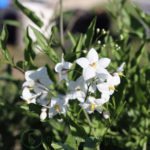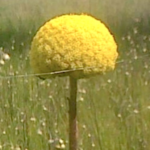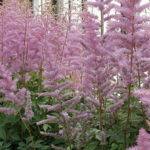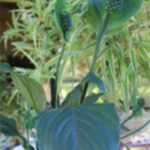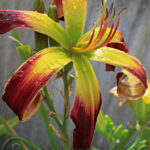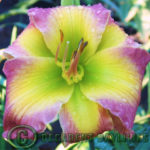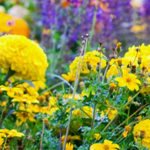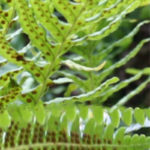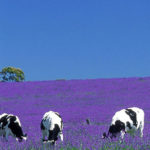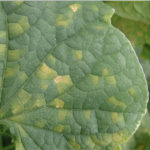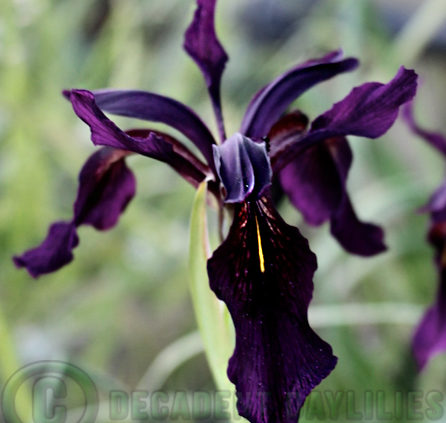
Iris Chrysographes Black Species
Iris Chrysographes: How To Grow And Propagate Iris Chrysographes Varieties
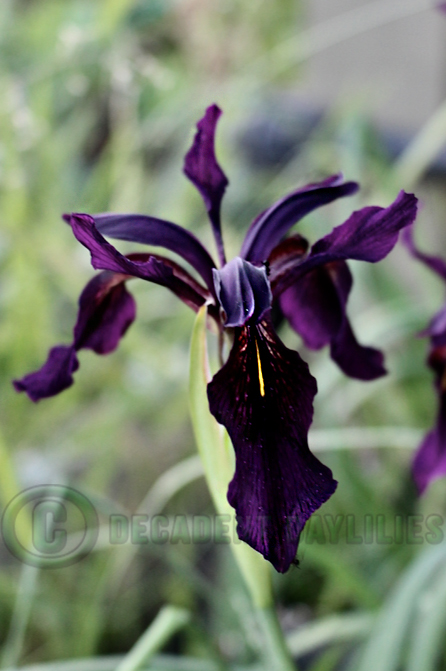 Iris Chrysographes or Black Iris or Siberian Iris is an herbaceous popular perennial belonging to the family Iridaceae. The perennial plant is native to Southern China and Myanmar. This rhizomatous or bulbous plant has narrow greyish-green strap leaves and is not evergreen but winter dormant in my winter climate. The blackish or deep violet beardless flowers have a velvety texture. The leaves are about 70 cm long and the flower stem comes in 25 to 50 cm. The plant grows in moist conditions and will reach a height of 0.1 to 0.5 metres within 2 to 5 years of planting. Flowers are slender 6-9 cm in diameter and have 3 spreading fall petals or sepals and 3 erect smaller petals alternating with the spreading petal. The outer petals have one or several golden yellow coloured stripes at the throat. This makes the flowers very eye catching. Flowers are produced the same as a dutch iris flowering on one single stem. Flowers furnish the stems during early summer. Sometimes called the black and gold iris this plant is appreciated for the extravagant and fragrant flowers, which make a good cut flower. Some plant parts are poisonous to human beings. The important cultivars of Iris Chrysographes are “Black Night” and “Black Beauty”.
Iris Chrysographes or Black Iris or Siberian Iris is an herbaceous popular perennial belonging to the family Iridaceae. The perennial plant is native to Southern China and Myanmar. This rhizomatous or bulbous plant has narrow greyish-green strap leaves and is not evergreen but winter dormant in my winter climate. The blackish or deep violet beardless flowers have a velvety texture. The leaves are about 70 cm long and the flower stem comes in 25 to 50 cm. The plant grows in moist conditions and will reach a height of 0.1 to 0.5 metres within 2 to 5 years of planting. Flowers are slender 6-9 cm in diameter and have 3 spreading fall petals or sepals and 3 erect smaller petals alternating with the spreading petal. The outer petals have one or several golden yellow coloured stripes at the throat. This makes the flowers very eye catching. Flowers are produced the same as a dutch iris flowering on one single stem. Flowers furnish the stems during early summer. Sometimes called the black and gold iris this plant is appreciated for the extravagant and fragrant flowers, which make a good cut flower. Some plant parts are poisonous to human beings. The important cultivars of Iris Chrysographes are “Black Night” and “Black Beauty”.
How to grow Black Iris?
Iris Chrysographes grows well in a fertile and moist soil, which is well drained and has an acidic or neutral pH. It can be cultivated easily in areas, which receive good sunlight or partial shade. In cooler areas, it is necessary to plant them during spring for proper growth. The plant needs mulching in spring. They are ideal for flower beds and flower borders. Amend the soil with compost before planting. It can be also grown in containers. The established plants can withstand dry conditions to a certain extent. They show good frost tolerance. The clumps of the plant need division every 2-5 years. They can be grown in cottage gardens, a city garden or in courtyard gardens. The plants should be spaced 15-18 inches. Plant the rhizomes or bulbs in an upright position in the soil. Moisture is essential during the growth period, but avoid overwatering the plant. Any old foliage can be removed during winter when the plants die back.
Propagation
Propagation can be done either by division of established clumps or rhizomes or using seeds. The division can be done from midsummer to early autumn while the ground is still warm so root growth happens before winter. Growing from seeds is a bit difficult, as the seeds need scarification to germinate due to the thick seed coat. You can directly sow the seeds in outdoor areas during autumn or you can start them in containers during winter using a cold frame and transplant them later to the outdoor area when the conditions are optimal. Iris chrysographes will cross well with Iris Forrestii they are compatible.
How to care?
Select vigorous rhizome to plant at the time of division avoids using old rhizomes.
- You can feed your Black Iris with slow releasing nitrogen fertiliser or liquid seaweed fertiliser in late winter.
- Adding well-rotted compost with manure or mulch during summer improves growth and flowering.
- You need to remove the dead or dying foliage during autumn.
- Remove the flower stems after the flower starts to turn brown.
- In windy areas, trim the leaves of the tall varieties to protect from the wind when the plants are established.
The common pests and diseases attacking Black Iris are slugs and snails and virus diseases spread by aphids and soft rot caused by bacteria. Grey moulds are also a common problem.
Both Iris Chrysographes and Iris Wilsonii are closely related to the Siberian Iris.




